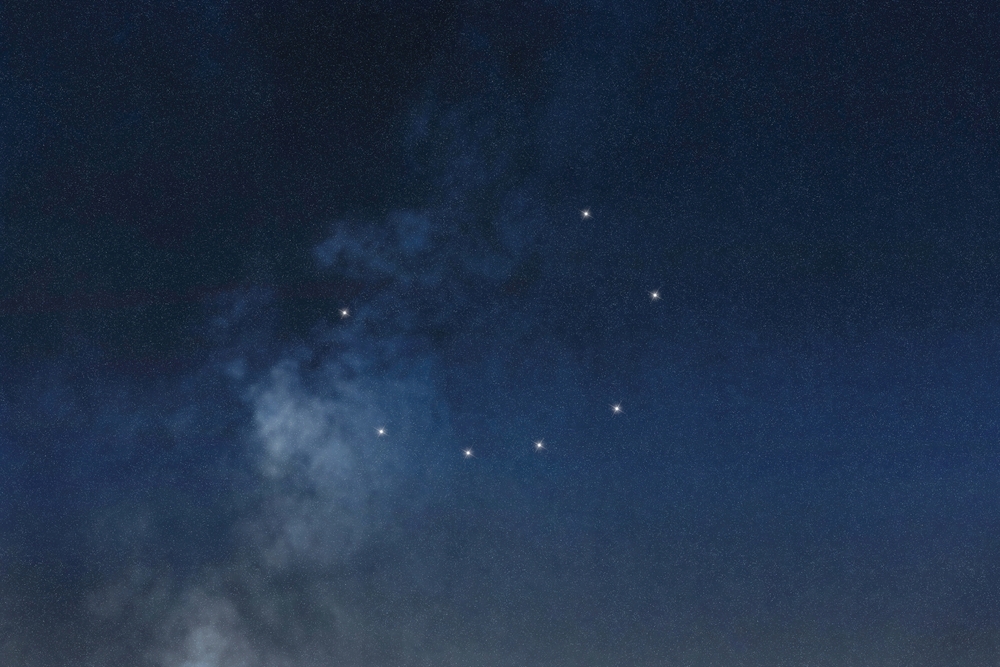A constellation that often sparks curiosity is Corona Borealis, known as the “Northern Crown.” This captivating constellation is unique in its shape and carries a rich backstory from ancient mythology. Our guide to Corona Borealis shares its fascinating features, including its structure, star composition, and the stories that surround it.
Jump to:
- What is the Corona Borealis Constellation?
- What Does Corona Borealis Look Like?
- How Far is the Corona Borealis Constellation from Earth?
- The Corona Borealis Constellation Myth
- Corona Borealis’ Stars
- Nebulae in the Corona Borealis Constellation
- Finding Corona Borealis in the Sky
- Fun Facts About Corona Borealis
- Study Astronomy for £29
Recommended for you!
Best SellersWhat is the Corona Borealis Constellation?
The Corona Borealis constellation, often called the “Northern Crown,” is a small, semi-circular constellation located in the Northern Hemisphere. With its graceful arc of stars, Corona Borealis resembles a crown, giving it both its name and symbolic meaning. In fact, “Corona Borealis” translates to “Northern Crown” in Latin, and it’s recognised for its distinctive, crescent shape, easily spotted on a clear night.
What Does Corona Borealis Look Like?

Corona Borealis is instantly recognisable due to its unique shape: a semi-circle of stars forming a crown. Unlike constellations that stretch across vast areas of the night sky, Corona Borealis is compact, made up of seven primary stars that form a neat, curved line. The brightest star, Alphecca (sometimes called Gemma), sits at the centre of the arc, representing the jewel in this celestial crown
The arc of stars also allows it to be easily distinguished from other constellations, as few share this particular structure. It’s worth noting that Corona Borealis is often mistaken for the aurora borealis (northern lights), yet the two have no relation apart from their shared Latin root meaning “northern.”
How Far is the Corona Borealis Constellation from Earth?
While constellations appear to us as flat patterns, each star within a constellation lies at vastly different distances from Earth. Corona Borealis is no exception. Its stars range from about 75 light-years away (Alphecca) to hundreds of light-years for others in the arc. The closest of these, Alphecca, is a binary star system with a brilliant white primary star.
The Corona Borealis Constellation Myth

The myth behind Corona Borealis is one of love, adventure, and a hero’s triumph. According to Greek mythology, the constellation symbolises the crown of Ariadne, the daughter of King Minos of Crete. Ariadne is most famous for helping the hero Theseus escape the labyrinth after slaying the Minotaur by providing him with a thread to retrace his steps.
Afterwards, Theseus abandoned her on the island of Naxos, but the god Dionysus found her and took her as his bride. As a wedding gift, Dionysus placed her crown in the sky, where it became the Corona Borealis constellation, a lasting symbol of their union. This myth lends a romantic, timeless quality to the constellation.
Corona Borealis’ Stars
The stars of Corona Borealis, though few in number, each have distinct characteristics that contribute to its charm:
- Alphecca (Gemma): The constellation's brightest star, representing the crown’s central gem. Alphecca is a binary star and shines brightly in the night sky, making it easy to locate.
- Nusakan: The second brightest star, with a faint blue hue. It’s also a binary system, meaning it has a companion star that’s gravitationally bound to it.
- T Coronae Borealis (Blaze Star): Known for its irregular nova outbursts, which can cause it to brighten significantly. It’s one of the few known stars with such a unique behaviour, fascinating astronomers who continue to observe its unpredictable flares.
- R Coronae Borealis: This is a yellow supergiant star known for dimming unexpectedly due to expelled clouds of dust that temporarily block its light.
Nebulae in the Corona Borealis Constellation
Unlike some larger constellations, Corona Borealis doesn’t contain any notable nebulae. However, it’s home to the Corona Borealis Galaxy Cluster, a vast collection of galaxies over a billion light-years away from Earth. Though invisible to the naked eye, this galaxy cluster is a stunning sight in deep-sky photographs.
Finding Corona Borealis in the Sky

Corona Borealis is best viewed in the Northern Hemisphere during the late spring and summer months, with peak visibility from May to July. During this period, the constellation reaches its highest point in the night sky, making it easier to locate in the evening.
Locating Corona Borealis
To locate Corona Borealis, start by identifying the constellation of Boötes, which is prominent in the northern sky. Corona Borealis lies just to the west of Boötes and forms a distinctive semi-circular shape that resembles a crown. A star map or astronomy app can also help pinpoint this elegant constellation with greater accuracy.
Viewing Corona Borealis with Binoculars or a Telescope
- Using binoculars: While the main stars of Corona Borealis can be seen with the naked eye in dark conditions, binoculars allow you to observe fainter stars, enhancing the crown-like shape of the constellation.
- Using a telescope: A telescope can provide a clearer view of stars like T Coronae Borealis, known for its unpredictable brightness changes, adding intrigue to this small constellation.
Best Viewing Conditions
For the best viewing experience, choose a location with minimal light pollution on a clear, moonless night. Under dark skies, Corona Borealis becomes more visible, and the arc of stars forming its crown shape will be easier to spot. Once you’ve identified Boötes, Corona Borealis will be nearby, offering a beautiful glimpse of this unique formation.
Recommended for you!
Best SellersFun Facts About Corona Borealis
- Symbolism: Corona Borealis symbolises a crown and is often associated with royalty, celebration, and unity due to its link with the myth of Ariadne and Dionysus.
- Variable Stars: T Coronae Borealis, known as the "Blaze Star," goes through unpredictable nova outbursts, making it a unique and mysterious feature of the constellation.
- Double Stars: Many of the stars in Corona Borealis, including Alphecca and Nusakan, are binary systems, making them a point of interest for those studying double stars.
- Notable Galaxies: The Corona Borealis Galaxy Cluster is one of the most remote clusters observable from Earth, containing thousands of galaxies grouped together in this region of the night sky.
- Celtic Connections: In Celtic mythology, Corona Borealis was thought to represent the Caer Arianrhod, or "Silver Wheel," a mystical symbol associated with fate and destiny.
Study Astronomy for £29
If the Corona Borealis constellation has sparked your curiosity, why not explore more about the stars and the cosmos with our Astronomy Diploma Course at Centre of Excellence? This course offers a detailed understanding of the universe, from constellations and star types to the fundamentals of space observation. Perfect for all budding astronomers, the course is available for a discounted price of £29.













